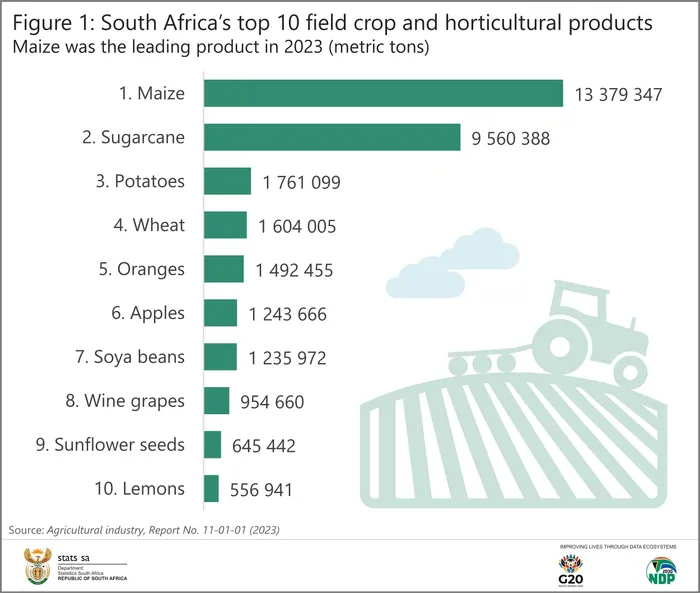Cows, Crops and Cabernet: Agriculture outshines in SA’s growth story

In 2023, South Africa's agricultural sector, particularly wine production, has defied expectations by becoming a crucial driver of economic growth, contributing significantly to the GDP with a remarkable 21.9% increase in wine grape production
Image: Freepik
Agriculture, gross domestic product’s (GDP’s) saviour in the first quarter, substantially grew overall income in 2023 according to Statistics South Africa’s latest data print.
The sector, dominated by household-staple maize, accounted for an indirect 2.9% of the economy last year and was the reason GDP came in at 0.1% in the first quarter when economists expected a decline.
Total income for the agricultural industry in 2023 was R491.7 billion. The total income represents an increase of 6.8% per annum compared with the income reported in 2017, said Statistics South Africa.
In 2023, the main contributor to total income was animal farming, followed by mixed farming, and then horticulture.
In terms of area planted, apples, pears, table grapes and wine grapes showed increases between 2017 and 2023, said Statistics South Africa. Wine grapes had the largest area planted in both years.
Wine grapes also accounted for the second-highest increase in production at 21.9% between 2017 and 2023.
The Agricultural industry 2023 statistical report notes that maize and sugarcane are leading products produced, with potatoes being the third largest, following relatively far behind.
Agricultural production is not uniform across the country – several products grow only in specific regions.
For example, sugarcane is mainly grown in two provinces. KwaZulu-Natal dominates, with some production occurring in Mpumalanga.
If a large-scale catastrophic event were to strike KwaZulu-Natal, the country would lose 80% of its sugarcane crop, said Statistics South Africa.
Wine grapes, peaches, apples, canola, pears and table grapes are mainly produced in Western Cape. The province also made notable contributions to the country’s basket of onions, oats and wheat, the data showed.

South Africa's top crop and horticultural products.
Image: StatsSA
Most of the nation’s citrus crop – which includes lemons, naartjies, oranges and grapefruit – is grown in Limpopo and Eastern Cape, with smaller contributions from Western Cape, Mpumalanga and several other provinces.
In terms of vegetables, Limpopo was also responsible for almost two-thirds of the country’s tomato crop. Western Cape produced half of the nation’s onions. Potatoes were mainly grown in Free State and Limpopo.
A recent example of international investment directed at macadamia farming in Mpumalanga is not surprising. The province was the leading producer of macadamia nuts in 2023, said Statistics South Africa.
There were an estimated 4.7 million head of cattle on commercial farms in 2023, mainly located in Free State, Eastern Cape and KwaZulu-Natal.
Sheep were predominantly found in the Eastern Cape, Northern Cape and Free State, it also found.
Pigs were more evenly distributed across the country, with Eastern Cape and Gauteng hogging almost 40% of the national tally.
Northern Cape was a notable exception with an extremely low number; less than two thousand commercially owned pigs were found in the province, the figures showed.